 W
WThe Calypso class comprised two steam corvettes of the Royal Navy. Built for distant cruising in the heyday of the British Empire, they served with the fleet until the early twentieth century, when they became training ships. Remnants of both survive, after a fashion; HMS Calliope in the name of the naval reserve unit the ship once served, and HMS Calypso both in the name of a civilian charity and the more corporeal form of the hull, now awash in a cove off Newfoundland.
 W
WThe Eclipse class was a class of seven 6-gun wooden screw sloops built for the Royal Navy between 1867 and 1870. They were re-armed and re-classified as 12-gun corvettes in 1876. Two further vessels were proposed but never ordered.
 W
WThe Bacchante class was a group of three iron screw corvettes in service with the Royal Navy from the late 1870s.
 W
WHMS Active was a Volage-class corvette built for the Royal Navy in the late 1860s. Launched in 1869, she entered service in 1873, and was the Commodore's ship on the Cape of Good Hope and West Africa Station. Her crew served ashore in both the Third Anglo-Ashanti and Zulu Wars. From 1885 to 1898, the ship was the flagship of the Training Squadron. Active was sold for scrap in 1906.
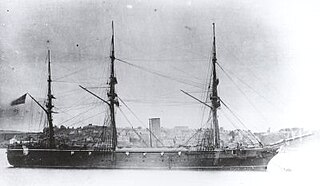 W
WHMS Amethyst was the lead ship of the Amethyst-class corvettes built for the Royal Navy in the early 1870s. She participated in the Third Anglo-Ashanti War in 1873 before serving as the senior officer's ship for the South American side of the South Atlantic. The ship was transferred to the Pacific Station in 1875 and fought in the Battle of Pacocha against the rebellious Peruvian ironclad warship Huáscar two years later. This made her the only British wooden sailing ship ever to fight an armoured opponent. After a lengthy refit, Amethyst again served as the senior officer's ship on the South American station from 1882–85. She was sold for scrap two years later.
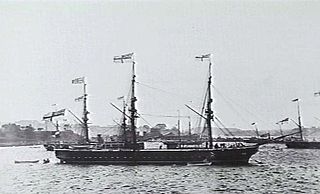 W
WThe Amethyst-class corvettes were a class of the last wooden warships to be built for the British Royal Navy; each was built at a Royal Dockyard. Three were ordered under the 1871-72 Programme and two under the 1872-73 Programme. Built in the early and middle 1870s, they mostly served overseas and were retired early as they were regarded as hopelessly obsolete by the late 1880s.
 W
WHMS Andromache was a 28-gun sixth rate launched in 1832. She was converted to a powder hulk in 1854 and was broken up in 1875.
 W
WHMS Bacchante was a Bacchante-class ironclad screw-propelled corvette of the Royal Navy. She is particularly famous for being the ship on which the Princes George and Albert served as midshipmen.
 W
WHMS Blanche was a 1760-ton, 6-gun Eclipse-class wooden screw sloop built for the Royal Navy in the mid-1860s by Chatham Dockyard.
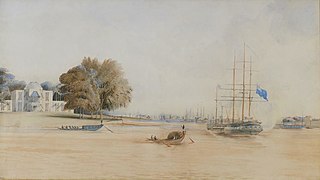 W
WHMS Calliope was a 28-gun sixth rate launched in October 1837 and broken up in November 1883.
 W
WHMS Calliope was a Calypso-class corvette of the Royal Navy of the United Kingdom which served from 1887 until 1951. Exemplifying the transitional nature of the late Victorian navy, Calliope was a sailing corvette—the last such ship built for the Royal Navy—but supplemented the full sail rig with a powerful engine. Steel was used for the hull, and like the earlier iron-hulled corvettes, Calliope was cased with timber and coppered below the waterline, in the same manner as wooden ships.
 W
WHMS Calypso was a corvette of the Royal Navy and the name ship of its namesake class. Built for distant cruising in the heyday of the British Empire, the vessel served as a warship and training vessel until 1922, when it was sold.
 W
WHMS Champion was one of nine Comus-class corvettes of the Royal Navy, built in the late 1870s and early 1880s to a design by Nathaniel Barnaby. Champion was one of three in the class built by J. Elder & Co., Govan, Scotland and was launched on 1 July 1878. She was the third vessel under this name in the Royal Navy.
 W
WHMS Cleopatra was a Royal Navy Comus-class screw corvette built in 1878.
 W
WHMS Comus was a corvette of the Royal Navy. She was the name ship of her class. Launched in April 1878, the vessel was built by Messrs. J. Elder & Co of Glasgow at a cost of £123,000.
 W
WHMS Constance was a Comus-class steel corvette of the Royal Navy. She was launched from Chatham Dockyard on 9 June 1880.
 W
WHMS Conway was a Conway-class sixth rate of the Royal Navy, built by Chatham Dockyard and launched on 2 February 1832. She was lent to the Mercantile Marine Association of Liverpool in February 1859 to act as a training ship for boys, and gave her name to HMS Conway, a series of ships and a shore-based school. When Winchester took her place as the training ship in 1861, the two ships swapped names. Under her new name of Winchester she became the Aberdeen Royal Naval Reserve ship on 28 August 1861.
 W
WHMS Cordelia was a Comus-class corvette of the Royal Navy, built at the Portsmouth Dockyard and launched on 25 October 1881.
 W
WThe Cossack-class corvettes were two 20-gun first-class corvettes, initially under construction in Britain for the Imperial Russian Navy. These ships were seized on 5 April 1854, after the outbreak of the Crimean War.
 W
WHMS Curacoa was a Comus-class corvette of the Royal Navy, built by John Elder & Co., Govan, launched in 1878, and sold in 1904 to be broken up. She served on the Cape of Good Hope and West Africa Station, the Australia Station and as a training cruiser in the Atlantic.
 W
WHMS Diamond was an Amethyst-class corvette in service 1874–89.
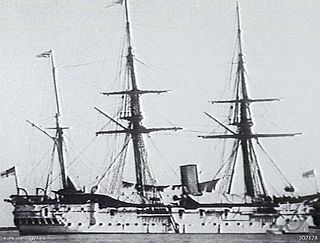 W
WHMS Dido was an Eclipse-class wooden screw sloop built for the Royal Navy in 1869. She was the fourth ship of the Royal Navy to bear the name. She was reclassified in 1876 as a corvette, and in 1906 renamed Actaeon II. She served as a mine depot ship and was merged into the Torpedo School at Sheerness, being sold for breaking in 1922.
 W
WHMS Druid was a Briton-class wooden screw corvette built for the Royal Navy in the late 1860s. She spent her service life overseas on the Cape of Good Hope and North America and West Indies Stations and was sold for scrap in 1886.
 W
WThe Emerald-class corvettes were a class of six composite screw corvettes built for the Royal Navy in the mid-1870s. The Opal was built by contract under the 1873-74 Programme, and Turquoise, Ruby, Tourmaline and Emerald under the 1874-75 Programme - the first three also by contract, while Emerald was dockyard-built at Pembroke. The final ship (Garnet) was also dockyard-built at Chatham under the 1875-76 Programme.
 W
WHMS Encounter was a Amethyst-class corvette built for the Royal Navy in the early 1870s.
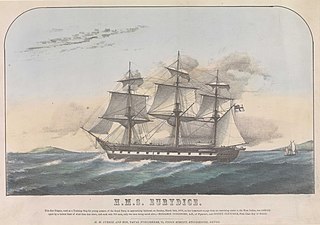 W
WHMS Eurydice was a 26-gun Royal Navy corvette which was the victim of one of Britain's worst peacetime naval disasters when she sank in 1878.
 W
WHMS Imogene was a Conway-class sixth rate of the Royal Navy, built by Pembroke Dockyard and launched on 24 June 1831. She served in the East Indies, China and South America, but was accidentally burnt while out of commission on 27 September 1840.
 W
WThe Jason-class corvette was a type of wooden screw corvette made between 1859 and 1863. There were a total of seven ships of this class made by the authorization of the Royal Navy.
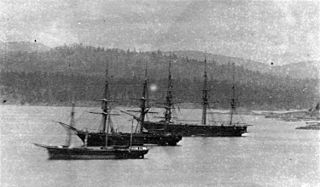 W
WHMS Malacca was a 17-gun sloop of the Royal Navy, launched in 1853. She later served as the Tsukuba of the Imperial Japanese Navy.
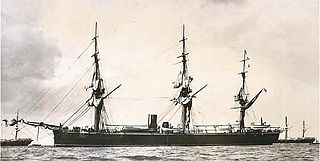 W
WHMS Rover was an 18-gun iron screw corvette built for the Royal Navy in the 1870s, the sole ship of her class. The ship was initially assigned to the North America and West Indies Station until she returned home in 1879. She was transferred to the Training Squadron when it formed in 1885. Rover was not really suitable for such a role and she was placed in reserve four years later and then sold for scrap in 1893.
 W
WHMS Sapphire was an Amethyst-class corvette built for the Royal Navy at Devonport Dockyard and launched on 24 September 1874.
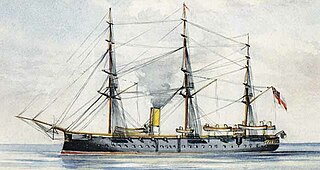 W
WHMS Thetis was a Briton-class wooden screw corvette built for the Royal Navy in the late 1860s.
 W
WHMS Volage was a Volage-class corvette built for the Royal Navy in the late 1860s. She spent most of her first commission assigned to the Flying Squadron circumnavigating the world and later carried a party of astronomers to the Kerguelen Islands to observe the transit of Venus in 1874. The ship was then assigned as the senior officer's ship in South American waters until she was transferred to the Training Squadron during the 1880s. Volage was paid off in 1899 and sold for scrap in 1904.
 W
WThe Volage class was a group of two screw corvettes built for the Royal Navy in the late 1860s. Both ships spent the bulk of their active service abroad. Volage spent most of her first commission assigned to the Detached or Flying Squadron circumnavigating the world and then carried a party of astronomers to the Kerguelen Islands to observe the Transit of Venus in 1874. The ship was then assigned as the senior officer's ship in South American waters until she was transferred to the Training Squadron during the 1880s.
 W
WHMS Wolverine was a Jason-class three-masted wooden screw corvette, of the Royal Navy. Later she became flagship of the Australia Station, eventually being presented to the Colony of New South Wales as a training ship for the New South Wales Naval Brigade and New South Wales Naval Artillery Volunteers.